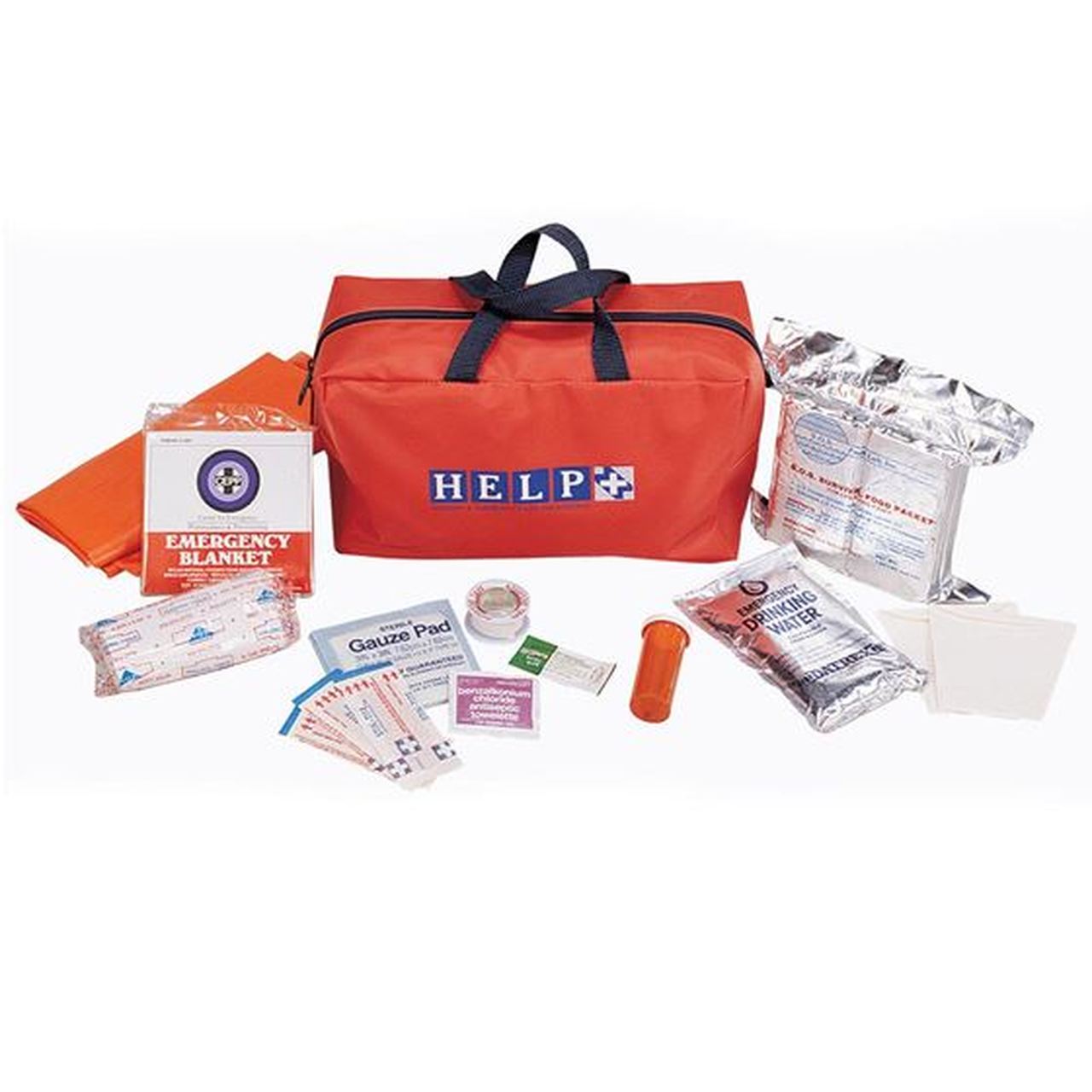What to Pack in Your Emergency Survival Kit
Jun 24th 2020
What to Pack in Your Emergency Survival Kit
There’s no harm in being overprepared - emergencies DO happen. You just never know. Geographical issues can come into play, such as wildfires, tornadoes, earthquakes, hurricanes, flooding and landslides. Accidents can occur, like hiking injuries, car trouble orgetting lost while camping. Chances are none of these things will happen to you. However – whilewe hope you never need it – ifan unexpected emergency happens, you’ll be glad you planned ahead with a survival kit.
Doughboys Surplus sells some premade kits, but when customers come into the store, we usually recommend getting a backpack and filling it with items to build your own kit. It turns out to be a cheaper option more suited to your specific needs. Plus, a backpack is the easiest thing to quickly grab if the need arises. Most people like to store one at home, at work and in each car.
These are the items we recommend for your emergency survival kit:
Water – The recommended amount of water for an emergency kit is 1 gallon per day. That’s simple enough to keep at home or work, but it could be cumbersome if you’re looking to evacuate quickly. Water purification tablets and an empty water holder can be easier to store and carry if you need to move fast.
Food – We suggest keeping 3 days’ worth (1,600 calories per day) of food in your kit. This can be MREs (Meals Ready to Eat) military type meals, Cliff bars or other energy bars, trail mix or canned food. Don’t forget to add a manual can opener.
First Aid kit – We recommend your kit have bandages in different sizes, antibiotic ointment, pain relief medicine, exam gloves, gauze pads, tweezers and scissors. A basic kit will most likely have those items.
Lighting – Tuck a flashlight and extra batteries into your emergency bag. You might also want to add a small headlamp so you can keep your hands free and available for other tasks.
Radio – Choose one that is battery powered or has a hand crank. Listening to the AM/FM news stations can help you stay in touch and stay safe during an emergency situation. Some of the newer emergency radios have built in LED lights and phone charging ports. Pack replacement batteries.
Whistle – This is a no-brainer. A whistle takes up almost no room and will cost no more than a couple of dollars. In an emergency, a whistle will provide a loud signal with little effort. Some whistles have a pea-like ball that creates a distinct trilling sound that won’t be confused with wind or nature sounds.
Blanket–Standard sleeping bags and blankets might take up more room than you have available. Mylar blankets are lightweight, aluminized polyester material that can be folded up into small squares. They’re windproof, waterproof and easy to store. They’ll keep you warm and only cost a few dollars.
Waterproof container – You’ll want to choose a small waterproof container for essential paper documents. These include photocopies of birth certificates, marriage certificate, insurance policies, IDs, real estate deeds and car titles.
YOU MAY ALSO NEED
Medicine - You’ll definitely want to store some extra doses of medicine if you have special medical needs. These can include insulin, EpiPen, heart and blood medicines, etc.
Pet supplies – One thing we’ve learned from California fires is that people can be forced to evacuate quickly with their pets. Add extra water, pet food, and pet meds to your kit. You might also include a portable crate in case your temporary lodging requires it.
Cash – If power is down, some places may not be able to run a credit or debit card. Keep a small stash of cash handy.
Hygiene Products – A bar of soap, toothpaste, toothbrush and feminine hygiene products are a few items you might want on hand if you’ve gone to a shelter or a friend’s house. Other emergency scenarios might call for toilet paper, wipes and plastic bags for trash disposal.
Wrench/Pliers – You might need one of these to turn off utilities at home.
Phone Chargers – If you don’t want to waste time looking around for your charger in an emergency, proactively pack a phone charger in your kit. You can also add an additional back up battery.
Children’s Items - If you have children, you’ll want to account for additional water and food needs. Add baby formula and a few diapers if needed.
Poncho – This can be helpful if you get stuck on the road having to change a tire in the rain. It folds up easily and takes up little room.
Matches – You can buy waterproof matches. The match box itself is treated with moisture resistant coating to make sure you can strike regardless of the weather. Or, you can get a waterproof container for matches to keep them dry from damp air, rain, or splashes. Some have a key-ring attachment you can clip onto your backpack zipper or car keys.
Duct tape – You can fix, attach, seal and do so much with a little bit of duct tape.
STORING AND MAINTAINING
Keep your kit in a cool, dry place. If you have boxed food, place it inside a tight plastic or metal container to keep rodents or other animals out. At home, leave it in a designated area where others who live with you know to find it. If you keep one at work, consider if you need to add additional supplies for others. Check items annually for expirations.

